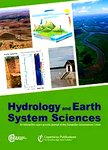版权所有:内蒙古大学图书馆 技术提供:维普资讯• 智图
内蒙古自治区呼和浩特市赛罕区大学西街235号 邮编: 010021

作者机构:E China Normal Univ Minist Educ Key Lab Geog Informat Sci Shanghai 200062 Peoples R China Chinese Acad Sci LREIS Inst Geog Sci & Nat Resources Res Beijing Peoples R China Colorado State Univ USDA UV B Monitoring & Res Program Ft Collins CO 80523 USA Colorado State Univ Nat Resource Ecol Lab Ctr Remote Sensing & Modeling Agr Sustainabil Ft Collins CO 80523 USA Univ Cent Florida Dept Civil Environm & Construct Engn Orlando FL 32816 USA
出 版 物:《HYDROLOGY AND EARTH SYSTEM SCIENCES》 (水文与地球系统科学讨论)
年 卷 期:2011年第15卷第1期
页 面:119-139页
核心收录:
学科分类:08[工学] 0708[理学-地球物理学] 081501[工学-水文学及水资源] 0815[工学-水利工程]
基 金:National Natural Science Foundation of China National Basic Research Program of China (973 Program) [2010CB951603] Shanghai Science and Technology Support Program - Special for EXPO [10DZ0581600] USDA NIFA [2010-34263-21075]
主 题:MAGNETIC SURFACES energy balance landscapes Earth surface evapotranspiration, actual Surface energy Vegetation cover remote sensing relative consistency land cover terrains Fault trees
摘 要:Evapotranspiration (ET) may be used as an ecological indicator to address the ecosystem complexity. The accurate measurement of ET is of great significance for studying environmental sustainability, global climate changes, and biodiversity. Remote sensing technologies are capable of monitoring both energy and water fluxes on the surface of the Earth. With this advancement, existing models, such as SEBAL, S_SEBI and SEBS, enable us to estimate the regional ET with limited temporal and spatial coverage in the study areas. This paper extends the existing modeling efforts with the inclusion of new components for ET estimation at different temporal and spatial scales under heterogeneous terrain with varying elevations, slopes and aspects. Following a coupled remote sensing and surface energy balance approach, this study emphasizes the structure and function of the Surface Energy Balance with Topography Algorithm (SEBTA). With the aid of the elevation and landscape information, such as slope and aspect parameters derived from the digital elevation model (DEM), and the vegetation cover derived from satellite images, the SEBTA can account for the dynamic impacts of heterogeneous terrain and changing land cover with some varying kinetic parameters (i.e., roughness and zero-plane displacement). Besides, the dry and wet pixels can be recognized automatically and dynamically in image processing thereby making the SEBTA more sensitive to derive the sensible heat flux for ET estimation. To prove the application potential, the SEBTA was carried out to present the robust estimates of 24 h solar radiation over time, which leads to the smooth simulation of the ET over seasons in northern China where the regional climate and vegetation cover in different seasons compound the ET calculations. The SEBTA was validated by the measured data at the ground level. During validation, it shows that the consistency index reached 0.92 and the correlation coefficient was 0.87.